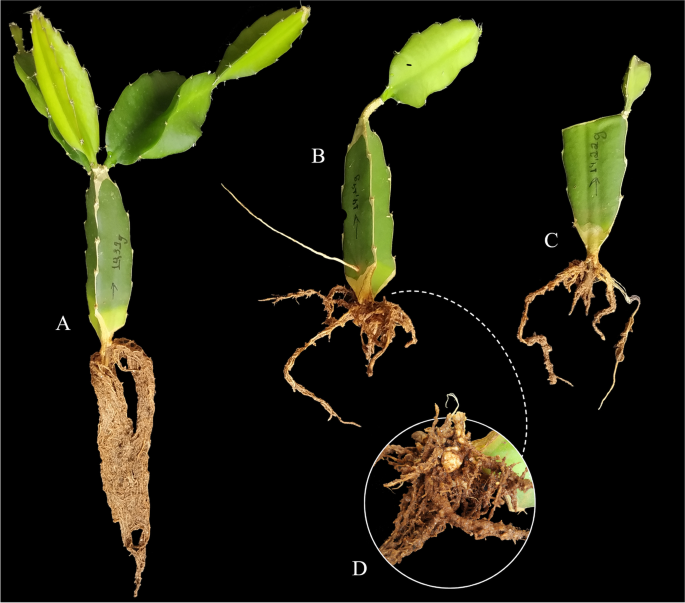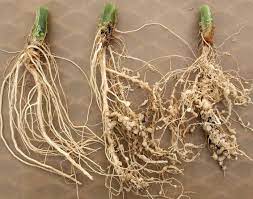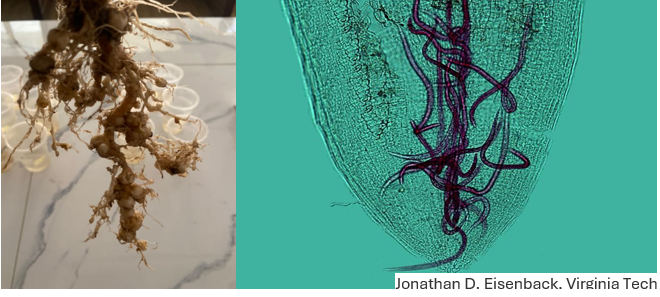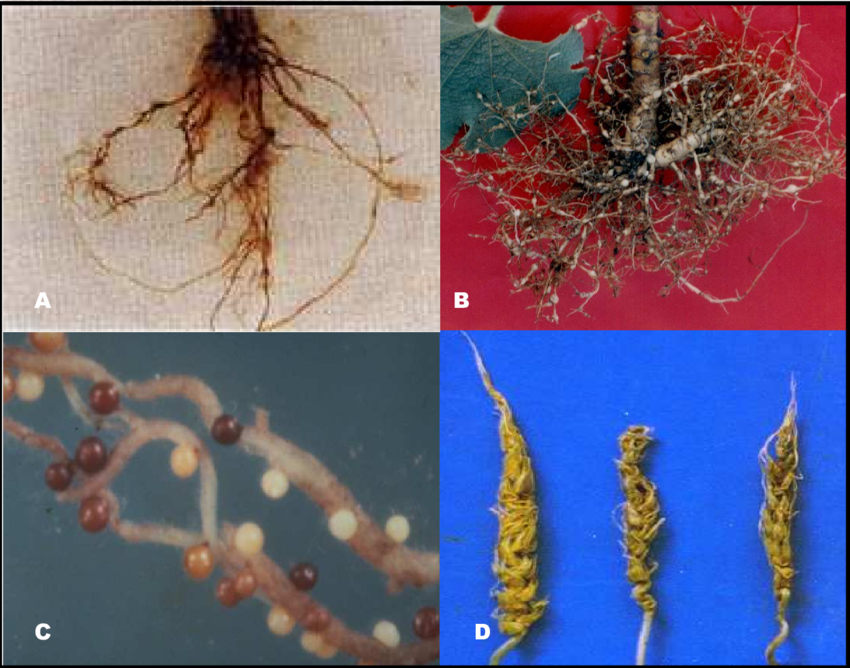Introduction
In the lush expanses of dragon fruit orchards, a hidden nemesis silently jeopardises the thriving ecosystem—the infestation of nematodes. As cultivators endeavour to harness the bounties of dragon fruit cultivation, the insidious presence of these microscopic worms poses a formidable challenge. This article navigates through the intricate web of nematode infestation in dragon fruit, shedding light on its causes, symptoms, and strategic solutions.
Table of Contents
Understanding the Landscape
Dragon fruit, renowned for its exotic appeal and nutritional richness, has become a staple in many diets worldwide. However, beneath the vibrant exterior lies a vulnerability to the stealthy infiltration of nematodes. These minute worms, belonging to the phylum Nematoda, insinuate themselves into the very roots of the dragon fruit cactus, disrupting the delicate equilibrium.

Causes of Infestation of nematodes in Dragon Fruit
- Soil Quality: The texture and composition of the soil in dragon fruit plantations play a pivotal role in nematode infestation. Loose, sandy soils create an optimal environment for nematodes to proliferate, causing a surge in the infestation of nematodes.
- Irrigation Practices: The frequency and method of irrigation significantly impact nematode activity. Excessive or inadequate watering can create a haven for nematodes, altering the moisture balance and fostering their reproduction.
- Container Cultivation Challenges: Dragon fruit cultivation in containers, though space-efficient, can inadvertently intensify nematode-related issues. The restricted environment may amplify the concentration of nematodes, leading to a higher risk of infestation.

Symptoms of Infestation of nematodes in Dragon Fruit
Detecting the subtle indicators of nematode infestation in dragon fruit is imperative for prompt intervention. Recognising these symptoms allows cultivators to implement targeted strategies to mitigate the impact.
- Stunted Growth and Yellowing: The first signs often manifest as stunted growth and yellowing of the dragon fruit plant. Nematodes compromise the root system, impeding nutrient absorption and resulting in a distinct lack of vigour.
- Root Lesions and Gall Formation: Examination of the root system reveals lesions and gall formation caused by nematode feeding. These abnormalities hinder the plant’s ability to uptake essential nutrients, further exacerbating the impact of infestation.
- Reduced Yield and Quality: Dragon fruit yield and quality take a hit when nematodes are left unchecked. The stress imposed on the plant can lead to suboptimal fruit development, affecting both quantity and market value.

Nematode Species Targeting Dragon Fruit
Several nematode species specialise in infiltrating dragon fruit crops, each with its own unique modus operandi.
- Meloidogyne incognita (Root-Knot Nematode): This nematode species induces the formation of characteristic galls on dragon fruit roots, impeding water and nutrient uptake. The consequences are particularly pronounced in younger plants.
- Pratylenchus spp. (Lesion Nematodes): Lesion nematodes infiltrate dragon fruit roots, causing necrotic lesions. This damages the vascular system, disrupting the plant’s ability to extract water and nutrients from the soil.
Strategic Approaches for Nematode Management
Addressing the infestation of nematodes in dragon fruit demands a comprehensive strategy that encompasses both preventive and remedial measures. Proactive management is key to preserving the vitality of dragon fruit orchards.
1. Soil Solarization
Harnessing the power of sunlight through soil solarization is a potent preventive measure. By covering the soil with transparent plastic sheets, solarization raises soil temperatures, creating inhospitable conditions for nematodes. This eco-friendly technique is particularly effective during the off-season.
2. Beneficial Nematodes
Introducing predatory nematodes of the Steinernema and Heterorhabditis genera can serve as a natural and sustainable control method. These beneficial nematodes actively seek out and infect harmful nematode species, acting as biological warriors on the subterranean battleground.
3. Resistant Dragon Fruit Varieties
The development and cultivation of dragon fruit varieties with inherent resistance to specific nematode species represent a cutting-edge approach. These resistant cultivars deter nematode infestation, offering a resilient defence mechanism against microscopic intruders.
4. Organic Amendments
Incorporating organic amendments, such as well-rotted manure or compost, enhances soil health and fosters a balanced microbial community. This fortification of the soil’s natural defences creates an environment less conducive to nematode proliferation.

Future Horizons: Innovations in Nematode Management
As the agricultural landscape continues to evolve, so does the quest for innovative solutions to combat nematode infestation in dragon fruit cultivation.
1. Biofumigation Techniques
Exploring biofumigation techniques involving cover crops with nematode-suppressing properties presents a promising avenue. Mustard and marigold cover crops, for instance, release compounds that act as natural nematicides, curbing nematode populations and fortifying the soil.
2. Nanotechnology Applications
Nanotechnology holds immense potential in the realm of nematode management. Nano-formulations of certain compounds exhibit enhanced efficacy in controlling nematode populations while minimising environmental impact.
Conclusion
In the intricate dance between dragon fruit cultivation and the persistent threat of nematode infestation, cultivators must remain vigilant and proactive. By understanding the nuances of nematode behaviour, implementing strategic management practices, and embracing innovative solutions, the resilience of dragon fruit orchards can be safeguarded. As we navigate the evolving landscape of agriculture, the battle against nematodes in dragon fruit cultivation serves as a testament to the relentless pursuit of sustainable and effective pest management strategies.
